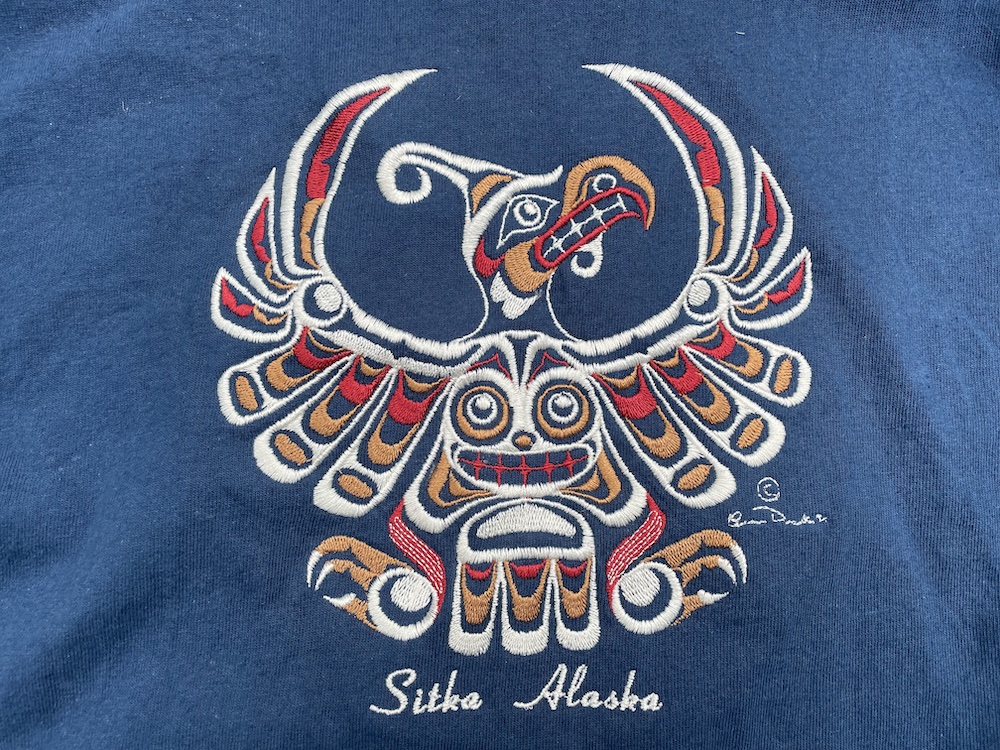
Several people have had some questions about a tee-shirt I was wearing during a recent video I made with an embroidered thunderbird on it. One person expressed legitimate concern about my wearing an image of what they took to be an idol—something Scripture forbids. Actually, the thunderbird image is not an idol but, as far as I know, a non-religious, symbolic artistic depiction of heaven. Let me explain.
I purchased the tee shirt on my recent trip to Alaska. This was my fifth trip to that state. On the shirt is some native art from the Tlingit Indians picturing the mythical thunderbird, which is similar to an eagle. In my trips to Alaska, I have studied Tlingit art, talked to Tlingit natives and inquired about their beliefs and spiritual practices. The thunderbird (look it up oh Wikipedia), was not an object of worship but rather was a mythical creature (like sasquatch/Big Foot, the Loch Ness monster, the abominable snowman, the Phoenix bird, the biblical Leviathan and the unicorn, or the griffen or winged lion (which is a representation of the Cherubim in the throne room of Elohim). Moreover, the thunderbird (not an object of worship) represented the good powers of heaven, while in other native cultures the the great horned serpent represented the lower powers of darkness, hell or Satan (now that’s one tee shirt that I would never wear!).
Moreover, the Tlingit art (like all of the art of the coastal indigenous peoples of the NW Pacific coast including Canada, Washington state and Oregon—where I live) is a highly stylized art that looks pagan but is not. These are highly caricaturized pictures of animals such as whales, ravens, eagles and salmon that represented their nation, clans, subclans. My wearing a thunderbird is no different than wearing a stylized eagle, which is a patriotic representation of America, since the eagle symbolizes America. Since I am an artist, I like artistic things, and I like native art (as long as it’s not pagan), since it often represents natural elements in YHVH’s creation (such as wind, rain, fire, trees, mountains and sky, earth, etc.) in a stylized way. I rather think that YHVH was keen on symbolic art himself. For example, look at all of the implements in the Tabernacle of Moses. They are are symbolic of many things!!!! Since I am an outdoorsman and make my living working with trees and plants and have spent much time in the forests and mountains, I tend to like things that depict or symbolize natural elements or aspects of YHVH’s creation. After all, doesn’t Romans 1:20 tell us that by his creation, which points to him, we understand his invisible attributes?
One more thing. Even the Christian cross is a pagan symbol going back to sun god worship, but now is a symbol for Christianity. I tend to think that the cross symbol goes back, potentially, to the Paleo-Hebrew letter tav which may mean “sign of the covenant”. So we potentially have a good symbol that was taken over by the pagans and corrupted as part of their idolatry, then they crucified Yeshua on their altar to their sun god, and now it’s a Christian symbol. What came first, the chicken or the egg? You see, symbologies can be complicated, since our world is full of them, and many of our words we speak, clothes we wear, things we eat, cultural practices and traditions come out of ancient paganism. Whole books have been written about this, and some Torah-minded people in their search for truth tend to get overly hung-up on this and begin to get legalistic and start judging others on what they say or do. (Look at some of the extremists in the sacred names movement where you’re forbidden to say “Jesus” or even have a Bible that has “Jesus” or “God” or “Lord” in it. As one can see, we want to avoid any pagan symbology that is overtly pagan, but to avoid it all we’d have to live naked in the woods and speak our own invented language, right?
When I was living in Europe, I knew a man in my church who hated organ music because it reminded him of the Catholic Church that he came out of. Does that mean the organ and its music is an evil because it’s associated with Roman Catholicism? There was another man who criticized me for wearing a red carnation in the lapel of my suit because this happened to be the symbol of the French communist party. So now we can’t listen to organ music and have red carnations??!!! It goes on and on!
I pray that this addresses the issue satisfactorily.
Here are some other examples of Tlingit (as all as art from other Pacific Northwest coastal tribes, which is part of the native cultural tradition in the area where I live) artistic depictions of Pacific Northwest coastal animals. This art may not be your cup of tea, but I rather like some of it. Different strokes for different folks!


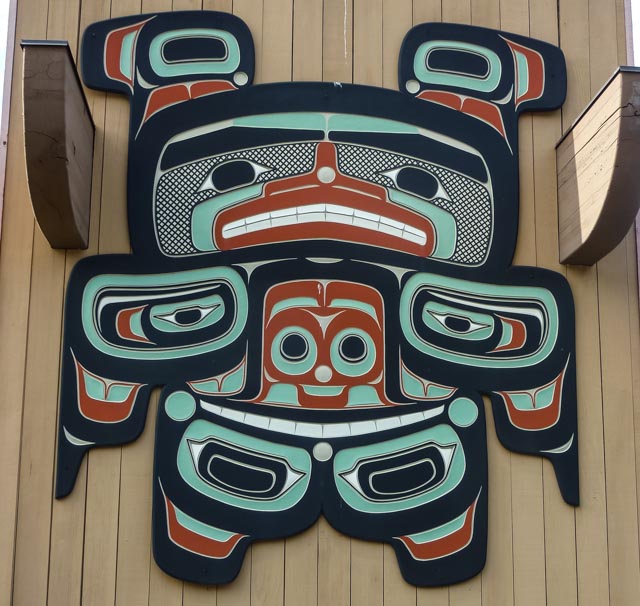

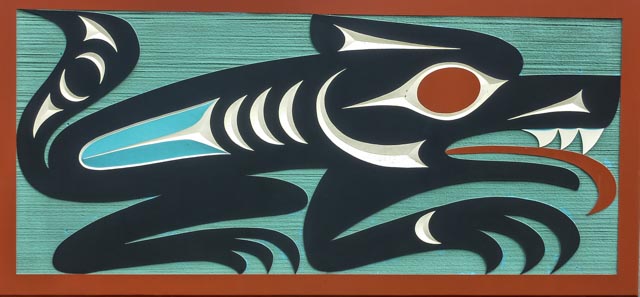
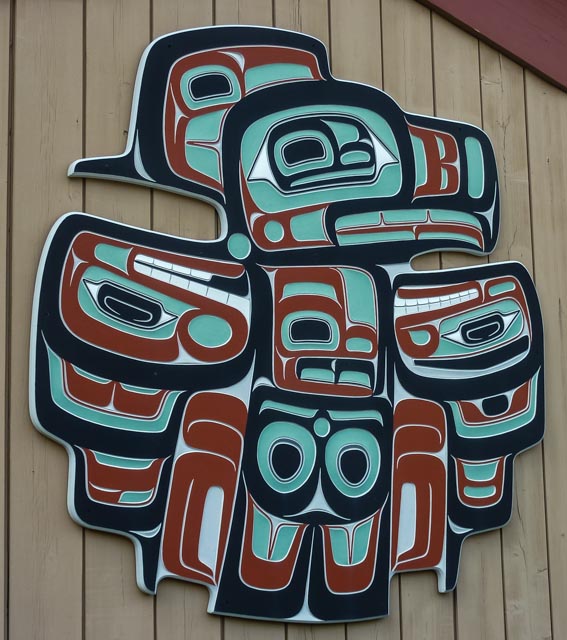

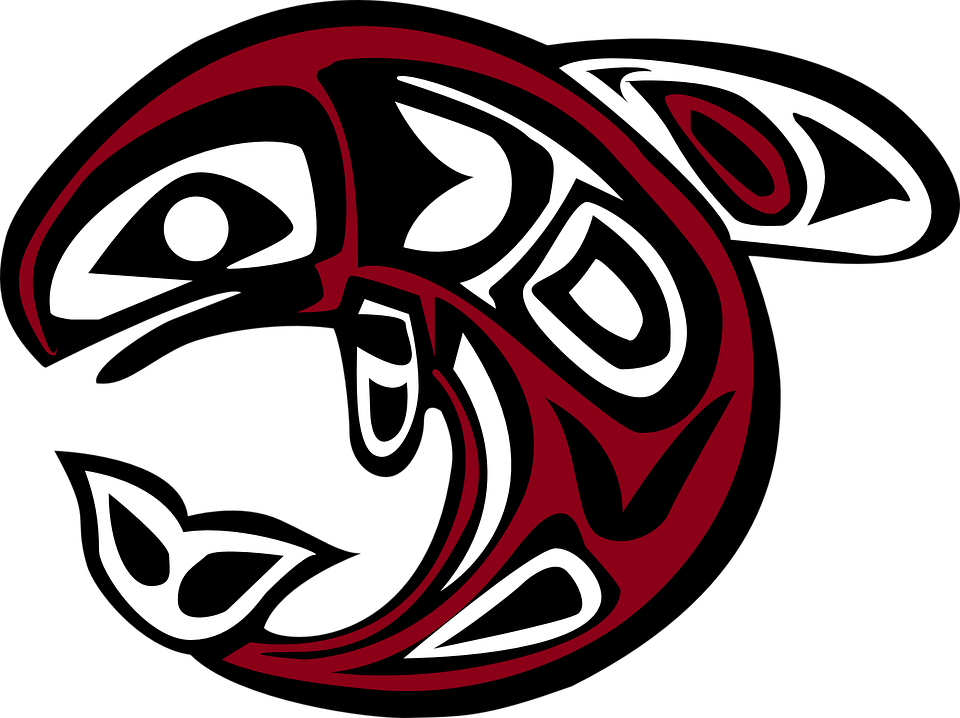
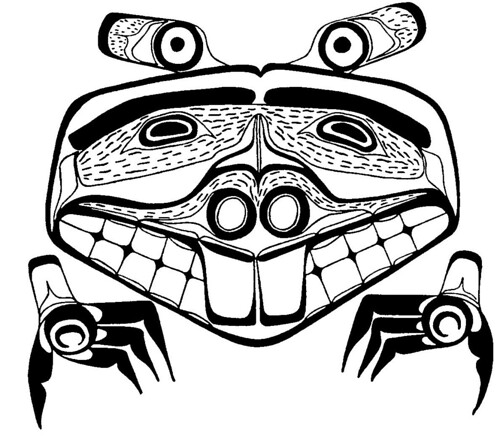
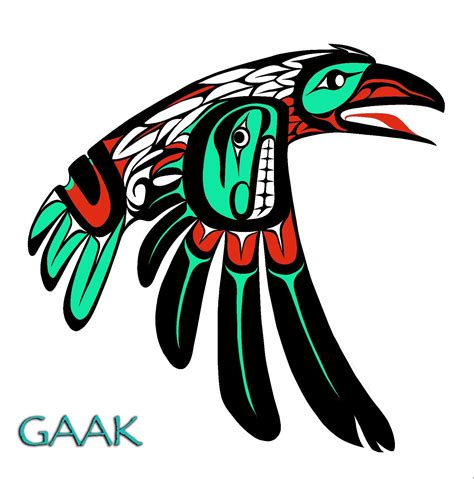
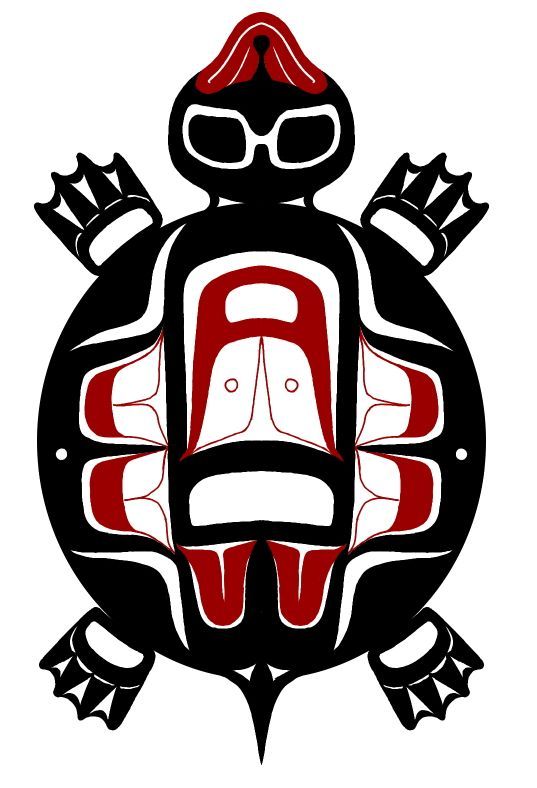
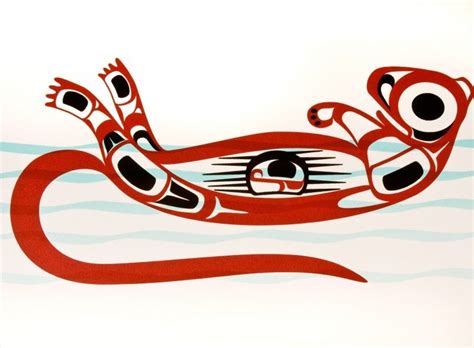
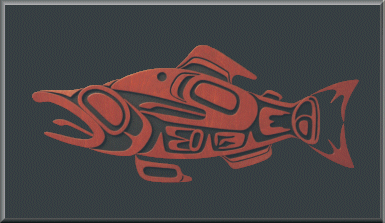


That is very interesting and educational. When I started learning about pagan symbols and realized our culture incorporates so much of it in our daily living, I was overwhelmed. Men and Women wear jewelry, make-up and clothing under the guise of enterprise and luxury and don’t even know it. We use all kinds of product’s and electronics using pagan symbols. As you say, it goes on and on. We would almost have to go naked, hungry and without technology to get away from it all. Come Yeshua come!
Picasso would be absolutely jealous.
Shalom, John
I take it that you’re not fond of this style of art. As they say, “Beauty is in the eye of the beholder.”
Nathan. You also see this kind of art in Aztec, Maya and Inka culture. You know what they did in their “cult-ure”. As Believers we should be very careful wearing symbols. Normally when we wear something symbolic, people will assosiate it with us as a person. The symbols of the Tabernacle /Temple were all from a Heavenly Temple, but your art is originally heathen. Yes nice artistic, but still. You are looked upon as a leading, biblical scolar, remember. I reacted really when I saw you dressed in that T-shirt. No offence! God bless your important service, Nathan!
Lars in Norway
I’ve enjoyed Tlingit and Haida art for years. I lived in Sitka in the 1970’s and met and consider famed Tlingit artist Nathan Jackson, who lives now in Ketchikan, to be a friend. One time Amanda and I met he and his wife on a Alaska ferry and I took photos of him carving a whale as we plied the waters of Southeast Alaska. Also Joann George a blonde woman from Angoon on Admiralty Island has many interesting art forms where she sometimes blends traditional Tlingit with beautiful realism. Tresham Gregg in Haines is another white guy that does many styles including traditional Chilkat. We’ve watched Tommy Joseph carving a totem that now stands in Totem Park in Sitka. I have a gold ring carved by famed artisan Steve Brown, who is a white man that has been invited into the clan. He’s one of the best. I’m sure you’ve met or know of Dr. Iglahliq Suuqiina, and Alaska Native who with his wife, Qaumaniq are Messianic believers, teachers and artists. Indigenous Messengers is their name. In 1990 I watched the first totem raising in over 50 years at Klawock on Prince of Wales Island. Famed Native carver Israel Shotridge, a Tlingit, carved a totem pole for the Haida. That was a big event that had journalists from all over including National Geographic. I’ve heard people for years having a problem with Native art while not seeing anything wrong with all of the paganism that has crept into Christianity.
All excellent points. Bigotry (opinions out of ignorance based on lack of information) knows no bounds. This is something we all have to be careful not to allow into our lives.
Speaking of totems, until recently I had the uninformed and bigoted opinion that they were objects of worship. How wrong I was. I have talked to several Tlingit tour guides and, on my last trip to AK, I spent some time with a renowned Tlingit totem pole carver who was carving one by hand (at a cost of $1000 per foot—at about 30 to 40 feet tall from a 450 year old, 4 foot diameter old growth western red-cedar log) at Totem Park in Sitka. Upon open-minded inquiry, I have now learned that totems are not idols, but carved representation of one’s genealogy and recent ancestry as well as clan and subclass designation and social status. They are placed in front of homes as a carved sign advertising to all visitors something about the family—sometimes using animals symbols to tell the story. Again and again, I have asked my Tlingit tour guides if they are worshipped or represent gods or spirits, and to a one they strongly affirm to me that they do not. There you have it.
Your point is well-taken about paganism in Christianity. Most Christians think nothing of steeples or Christmas trees or Xmas wreaths or even crosses with all of their pagan and lewd sexual originations. Or how about all of the Renaissance art with all the naked people? It’s all over the Vatican. Check out the Sistine Chapel, for example. And one wonders where all the pedo priests came from? Oy vey! Come out of her my people!!!
I would love to sit down with you to hear about some of your AK experiences. I am drawn to AK. Not sure about the winters tho. The coastal SE would be so bad. Just a lot of rain, but we can handle that being from Oregon.
I’ll bet the totem carver you watched in Sitka was Tommy Joseph. He’s a pretty good size man and has sported some pretty long black hair (mid back) when I’ve seen him. I’ve got a few experiences in Alaska and enjoy talking about Alaska. I lived there from 1975-2002 and have visited several more times since 2002. I couldn’t tell you how many times I’ve been there. I spent most of my time in Southeast and can tell you that many who moved to Southeast from Portland, Eugene or Seattle thought they knew what rain was all about, but they were in for a surprise. There are places like Skagway that only gets about 30 inches per year, the least amount in the world’s largest temperate rainforest, and the USA’s largest the Tongass National Forest. I’ve heard of a record rainfall of 49 inches in the month of September followed in October by 49.5 inches and a new monthly record! That was in Yakutat a few years ago. Most Southeast towns and villages seem to get right around 100 inches in a year, but there are certainly times when 200 inches can also occur. I’ve never taken Amanda to Alaska in the summer because that’s when everyone visits, the locals are pretty busy working and the biting insects can make the outdoors fairly miserable. March is a great time to visit Anchorage during the Fur Rendevouz while meeting mushers and shaking paws with their dogs before the Iditarod sled dog race starts. A warmup ride through mostly downtown is on the first Saturday of March and then the restart on frozen Willow Lake on the first Sunday in March. Fairbanks environs like Chena Hot Springs are also fantastic in March. It’s winter and you can wear appropriate clothing to stay warm, but also Spring is in the air and so are the aurora. Another good time to view the northern lights after most tourists have gone and so have the mosquitos is late, late August and into September. Denali is fantastic place to spend some time in the backcountry like in Kantishna at the Skyline Lodge. The Bush or backcountry areas are especially good to view the night sky.
I just looked up Tommy Joseph online and this was the man who was carving the pole. Very personable and eager to answer my many questions about his work, history and many other things. I will include him in my video when I get around to it.
We’re still waiting to see some more photos of your last Alaska trip. We saw those photos around the Arctic Circle, but have not seen Sitka yet.